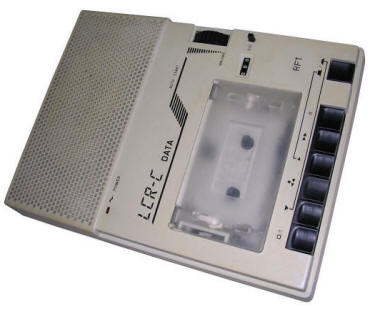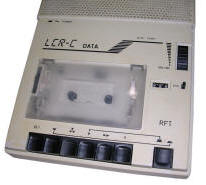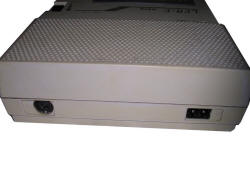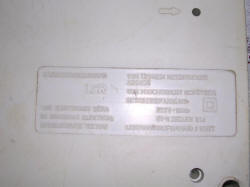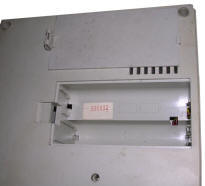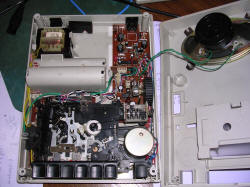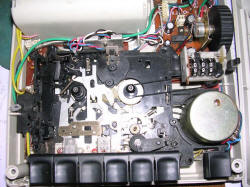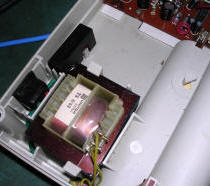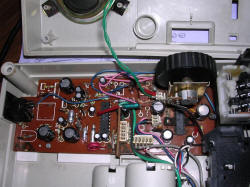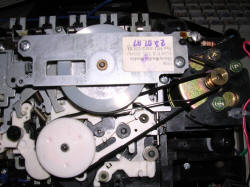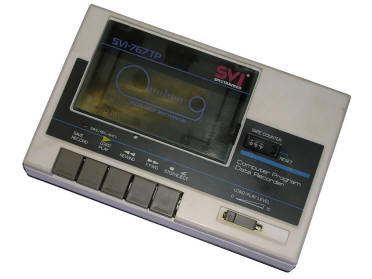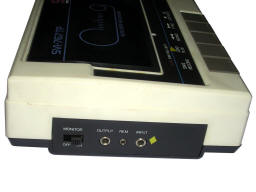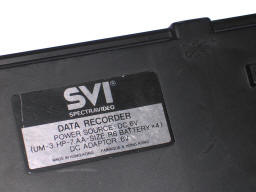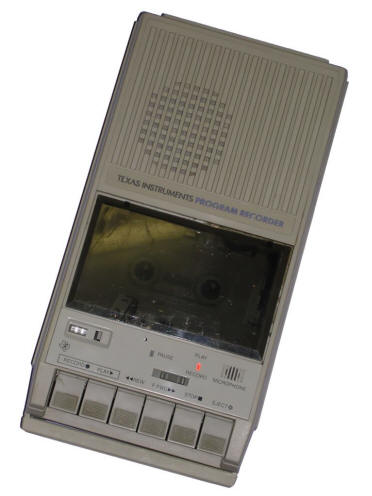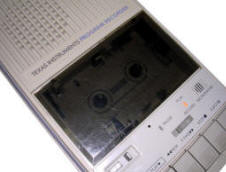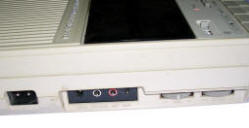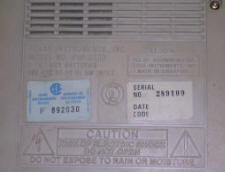Tape recorders (Page 2)
Audio tapes were primary program and data storage in
8-bit microcomputers. They were cheap, easy to get and offered small,
but enough amount of space. Unfortunately they were slow and quite
unreliable, so commercial software was recorded few times on the same
tape. Many computers, such as ZX Spectrum, Meritum or MSX used an
ordinary tape recorder, like the one used in audio recording. But some
computers used dedicated hardware with serial interface, for example
8-bit Atari computers or Commodore machines. Fortunately, most of these
computers were quite easy to modify, so normal decks could be used.
Another group of decks were normal ones, but with special circuits
making working with microcomputers easier. These included frequency
filters, self-setting of optimal volume or small speakers allowing to
find place on tape without waking up everyone in house. Nearly all
recorders had counter, which allows to fast rewind to known program
location (unfortunately their results sre usually different in different
units) and a hole near read/write head to tune head skew, if it was
needed.
As tapes were slow, some decks were re-made to load programs faster. In Commodore computers, Turbo-Tape modification required only a software program, but in Atari 8-bit computers it was needed to put some electronics in tape recorder and load software from cartridge. If there was no software, recorded tape became unreadable. If there was no hardware - the computer could not read program or hanged during loading every time.
| RFT LCR-C Data |
|
||||
| Manufactured by: RFT kombinat | |||||
| Manufactured for: Robotron KC85 | |||||
| Conected to: Sound input/output | |||||
|
Capabilities: - Can be used as both sound player/recorder and data recorder (has filters) - Loudspeaker, - Semi-automatic mechanical part - Tape counter, This recorder was made especially for Robotron KC85 and KC87 home computers manufactured in East Germany. It was a modification if existing tape recorder. Some later versions have some components not critical to computer operation removed. This one has no battery connectors (only battery chamber) and no handle. Later ones had even speaker replaced with piezo buzzer. |
|||||
|
Notice that this unit has few soultions not commonly found in
typical simple tape recorders. The mechanism requires very small
force on a key to act. Keys come only few mm down, then
mechanical part does all needed things. The recorder is made of components from different countries of Eastern block, for example the power transformer is Polish. |
|||||
|
|
|
|
|||
|
Power Supply: Built-in transformer-based power supply |
|||||
|
Links: |
|||||
| SVI-767TP |
|
|||
| Manufactured by: Spectravideo | ||||
| Manufactured for: Spectravideo computers | ||||
| Connected to: Audio connectors | ||||
|
Capabilities: - Small speaker for checking tape position - Counter - External 6V DC power supply - Motor control (2.5mm Jack mono) - Using two 3.5mm Jack mono for sound I/O
|
||||
| This
small tape deck was used with Spectravideo computers, for
example X'Press SVI-738. Unfortunately it had many flaws, such
as lack of speed stabilization or poor mechanics. 767TP is a compact version of SVI-767, a full-sized tape recorder with internal power supply. |
||||
|
|
||||
|
Power Supply:
1 - Ground |
||||
| Texas Instruments Program Recorder |
|
|||
| Manufactured by: Spectravideo | ||||
| Manufactured for: ?? TI99 ?? | ||||
| Connected to: Audio connectors | ||||
|
Capabilities: - Built-in microphone and speaker makes it able to work as full-featured mono tape deck - Motor control (2.5mm Jack mono) - Sound I/O (two 3.5mm Jack mono) - Battery, external power supply (6V DC) or 110V power. - Tape counter - Carrying handle
|
||||
| I have no idea for what computer it was made. I think it may be for TI99 home computers popular in USA, as its power supply is for 110V. It's an ordinary cassette deck, equipped with built-in microphone and speaker to work as a normal recorder. | ||||
|
Power Supply:
1 - +6V DC |
||||





